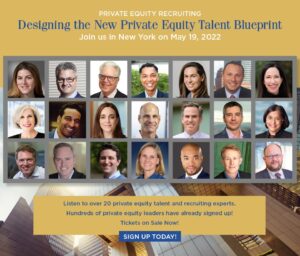Jobless Claims Fall to Five Decade Low; Hiring Uptick Expected in Q2

March 24, 2022 – The Labor Department reported that 187,000 Americans have filed new claims for state unemployment benefits, a decrease of 28,000 from the previous week’s revised level. This is the lowest level for initial claims since September 6, 1969 when it was 182,000. The previous week’s level was revised up by 1,000 from 214,000 to 215,000. The four-week moving average was 211,750, a decrease of 11,500 from the previous week’s revised average. The previous week’s average was revised up by 250 from 223,000 to 223,250.
The advance seasonally adjusted insured unemployment rate was 1.0 percent for the week, unchanged from the previous week’s unrevised rate. The advance number for seasonally adjusted insured unemployment during the week was 1,350,000, a decrease of 67,000 from the previous week’s revised level. This is the lowest level for insured unemployment since January 3, 1970 when it was 1,332,000. The previous week’s level was revised down by 2,000 from 1,419,000 to 1,417,000. The four-week moving average was 1,431,500, a decrease of 31,000 from the previous week’s revised average. This is the lowest level for this average since February 28, 1970 when it was 1,421,000. The previous week’s average was revised down by 500 from 1,463,000 to 1,462,500.

“Right now, U.S. cases are in the sweet spot between the bottom of the initial Omicron wave and the impending explosion in BA.2 cases, but this probably won’t last long,” Ian Shepherdson, chief economist at Pantheon Macroeconomics, wrote in a note. “Our bet … is that the coming BA.2 wave will trigger a modest but visible pull-back in the discretionary services sector, thereby dampening consumption in the first month of the second quarter.”
Federal Reserve chair Jerome Powell reiterated his assessment of the labor market’s strength earlier this week, just days after calling the current job market “tight to an unhealthy level” in his post-Fed meeting press conference last week. “The labor market has substantial momentum. Employment growth powered through the difficult Omicron wave, adding 1.75 million jobs over the past three months,” Mr. Powell said in a speech Monday. “By many measures, the labor market is extremely tight, significantly tighter than the very strong job market just before the pandemic.”
“Demand for labor remains strong, apparent in the near-record levels of job openings which are far outpacing the number of unemployed in the economy,” Rubeela Farooqi, chief U.S. economist at High Frequency Economics, said in a research note. “That should keep layoffs low, for now.”
Hiring Outlook
Strong hiring optimism continues into the second quarter of 2022, according to the Q2 ManpowerGroup Employment Outlook Survey of 41,000 employers. Employers in 36 of 40 countries report stronger hiring intentions than this time last year with greatest demand in IT, finance, and manufacturing. Demand for skilled workers remains at record highs as employers seek to attract and retain the best, diverse talent as employers embrace the post-pandemic era.
Related: 5 Actions Business Leaders Can Take as War In Ukraine Deepens
“Labor markets around the world are looking strong for Q2, with hiring outlooks back at pre-pandemic levels in most countries,” said Jonas Prising, chairman and CEO of ManpowerGroup. “Any impact of the Ukraine crisis is not reflected in employer hiring intentions. While Poland and neighboring countries are dealing with the humanitarian crisis, we must be poised to help resettlement and employment efforts for refugees, adapting roles and requirements to fill vacancies and create new opportunities.”
 Challenges, Opportunities and Leadership Implications of the Great Resignation
Challenges, Opportunities and Leadership Implications of the Great Resignation
In a new report, Russell Reynolds Associates says that availability of key talent and skills is a leading cause of concern among business leaders. And it’s the No. 1 issue they feel least ready to face. Forty percent of employees, in fact, say that they are “at least somewhat likely” to depart from their current job in the next three to six months.
“At ManpowerGroup we are working fast to leverage our experience integrating refugees into labor markets from other countries – for example from Syria to Germany, Afghanistan to U.S. – and to adapt and scale reskilling and upskilling programs specifically targeted to this population,” said Mr. Prising. “Now is the time for collaboration between employers and governments to make it as fast and simple as possible to integrate refugees into the workforce so they can earn a living, contribute to society, and most importantly feel welcomed in their new surroundings.”
Key Findings
- Strongest hiring plans for employers in Brazil (+40 percent), India (+38 percent), Mexico (+38 percent), and Sweden (+38 percent); weakest reported in Greece (-two percent), Poland (+five percent) and Japan (+six percent).
- Outlooks improve year-over-year in 36 countries with the strongest improvements reported by employers in South. Africa, Panama, Peru, Colombia, Brazil, Sweden and the Netherlands.
- Employers in North America report the most optimistic regional outlook of 38 percent followed by South and Central America (+35 percent), APAC (+28 percent) then EMEA (+22 percent).
- Labor shortages drive worker demand across sectors: Manufacturing (+31 percent), wholesale & retail trade (+29 percent) and primary production (+27) report strong hiring intentions as employers continue to struggle to fill roles requiring workers to be on site.
- The weakest (though improved) hiring intentions were reported in restaurants and hotels (20 percent) as hospitality continues to recover following the outbreak of the Omnicron variant at the end of 2021.
Global Hiring Plans by Region
EMEA: Employers report positive hiring intentions in 22 of 23 countries during the next three months. The only negative outlook is reported by employers in Greece. Year-over-year hiring sentiment improves in 20 and declines in only three countries, Greece, Poland, and Romania. The strongest improvements reported in Sweden (+38 percent), Netherlands (+36 percent) and Belgium (+34 percent); weakest in Greece (-two percent), Poland (-five percent) and Romania (-seven percent). In France and Germany, Paris (+25 percent) and Munich (+33 percent) report some of the most optimistic City outlooks in the region, driven by employers in IT and Finance.
North America: Both U.S. (+35 percent) and Canada (+37 percent) report strong hiring levels for Q2 2022. Employers in Canada report a slightly stronger outlook than last quarter (+two percent), while the U.S. shows a small decline for the second quarter (-six percent). Hiring managers in both countries expect hiring to be significantly stronger compared to intentions year-over-year, +27 percentage points in Canada and +16 in the U.S. In the U.S., employers report the strongest outlooks (+51 percent), those in education, health, social work and government (+27 percent) report the weakest.
Central & South Americas: Positive hiring intentions are forecast for all eight countries in South and Central America during Q2 2022. The strongest hiring plans are reported in Brazil (+40 percent) then Colombia (+38 percent); weakest in Argentina. Compared with previous quarter, seven countries see intentions weaken, while Panama shows a small increase (+two percent percentage points). The outlook in the region has improved 40 points when compared with the previous year, and 22 points since last quarter.
APAC: In all seven Asia Pacific countries and territories employers report positive and improved hiring intentions for the next three months. The strongest hiring plans are reported in India (+38 percent) Australia (+28 percent) and China (+28 percent), while the weakest hiring plans are expected in Japan (+six percent), Taiwan (+seven percent) and Hong Kong (+nine percent). In addition, the hiring sentiment strengthens in China and Singapore compared to Q1 and weakens in Japan, Taiwan, Australia, New Zealand, India, and Hong Kong.
Related: Major Paradigm Shifts Coming Out of the Coronavirus Crisis
Contributed by Scott A. Scanlon, Editor-in-Chief; Dale M. Zupsansky, Managing Editor; and Stephen Sawicki, Managing Editor – Hunt Scanlon Media












